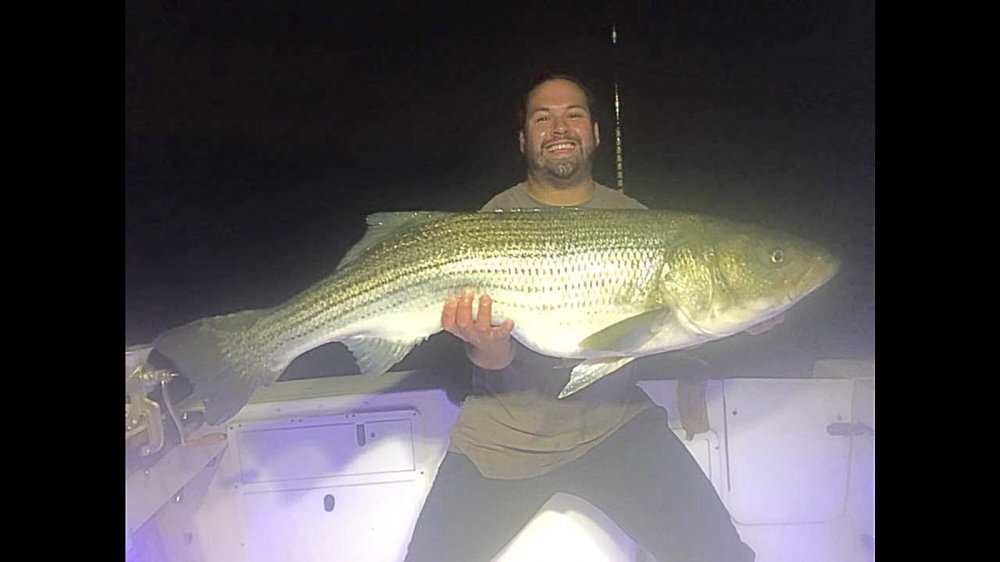-
Posts
448 -
Joined
-
Last visited
-
Days Won
1
Content Type
Profiles
Forums
Hunting New York - NY Hunting, Deer, Bow Hunting, Fishing, Trapping, Predator News and Forums
Media Demo
Links
Calendar
Store
Posts posted by hunterman7956
-
-
WATERPROOF SPRAY 2X . THEN PLUG HOLES FROM INSIDE WITH GOOP, AIR OUT A FEW DAYS AND GOOD TO GO !!
-
I have noticed that when blue jays chatter alot it is like they're scolding an animal sort of like when tree rats make that growling sound when a hunter is in their area . Anybody else notice that ?
-
I thought paypal didn't pay out untill seller gives confirmation of shipping ?? Funds on my card always shows pending sale until item is shipped ....
-
 1
1
-
-
If in a tree stand go HIGHER ...25 -35 FT .....should reduce odor spreading down on deer ...
-
I just bought arrest from wti and sent it to my home in bklyn ny no problem ata all .Just a fyi on slay it kills good but the downside is some things cannot be planted after using it ,I was told by wti that it lasts 40 months before you should plant there.Needless to say I don't use it and hit any weed growth with round up and plant no plow to fill in dead areas .
-
I might have posted something close to this b4
US AH-64 Apache, Destroys ISIS Troops in IRAQ
http://www.patriotchronicle.com/us-ah-64-apache-destorys-i…/if it offends anyone , sorry i just like this ********
-
I AM IN OSTEGO AND IF YOU GO WITH A SHED PUT IT ON GRAVEL AND 6X6'S THIS WAY NO ADDED TAXES ALSO THERE'S A GUY IN MT.UPTON THATS GOOD AND PUTS IT RIGHT WHERE YOU WANT IT .i ALSO HAVE A TRAILER AND KEEP IT ON CINDER BLOCKS AND I .LEAVE THE WHEELS ON HOPE THIS HELPS .
-
 1
1
-
-
Say the elec is out for a few weeks as with sandy getting gas was a horror if you could get any at all remember gas can't be pumped without elec
-
anyone try propane ? stores for years and doesn't go bad like gas nor is it dangerous..
-
If it's cold I bring along boot blankets just put over boots and stuff a handwarmer on top of boot tie closed and super warm.
-
 1
1
-
-
-
HAPPY BIRTHDAY
-
Looks like the beginning of a cable sportsman show, I really like it , even the name is good i'll subscribe.....
-
 1
1
-
-
THEY LIVED WHEN DINOS ROAMED THE EARTH
-
THE PIC LOOKS SO REAL . IT'S AMAZING
-
GET A SOIL TEST
-
GOOD LOOKING BUCK HOPE YOU GET A SHOT THIS FALL
-
 2
2
-
-
LOOKS LIKE A HOG EAR
-
did you read the first lines of my post ? first hand knowledge over 50 years hunting deer I posted the articles from different writers to explain it better .Not looking to argue just stating facts as I know them...
-
I have used rub lines to kill a few bucks and followed the line right up the mountain and waited for the bucks to come up.From my observations cluster rubs are usually a staging area for them as they wait to enter another area at dark. The first post was from Outdoor life magazine about rubs.This is from another article
A tree that has been shredded by antlers is the most obvious sign that a whitetail buck has been in an area. But with some knowledge of whitetail deer behavior and a little scouting, a whitetail deer rub can tell you a lot more. You can determine when the whitetail buck rub was made, what the deer was doing when he made it, the direction the whitetail buck is traveling, and the buck's probable age. Buck rubs may be the best type of whitetail deer sign in determining where your next trophy whitetail deer is laid up.
Early Season Rubs
Mature whitetail bucks make two distinct types of rubs. One type of whitetail deer rub is the early-season rub. These whitetail buck rubs are in correspond to late-summer feeding patterns. To unravel a whitetail buck's routine as he progresses through the season, you must understand the difference types of rubs a whitetail buck makes.
Early season whitetail deer rubs are produced for several reasons. Scraping antlers on trees builds up neck and shoulder muscles. This is done so whitetail bucks will be muscled up and ready to fight when the rut rolls around. It allows whitetail bucks to release aggression caused by rising testosterone levels throughout the whitetail deer season. Markings designate a whitetail buck's territory, both visually and by scent deposited from the forehead glands. Other whitetail bucks may rub the same tree, adding their signature smells.
Mature whitetail bucks make their initial rubs in September and early October on stout trees, usually 2 to 4 inches in diameter (see sidebar). These mark a buck's primary home range. Clusters and lines of them usually indicate that they were created either as the whitetail buck traveled from food sources to thick bedding cover at dawn or on his way back to feed in the late afternoon. Hunting these spots may be your best chance to take a mature animal before the rut. -
I have used rub lines to kill a few bucks and followed the line right up the mountain and waited for the bucks to come up.From my observations cluster rubs are usually a staging area for them as they wait to enter another area at dark. The first post was from Outdoor life magazine about rubs.This is from another article
A tree that has been shredded by antlers is the most obvious sign that a whitetail buck has been in an area. But with some knowledge of whitetail deer behavior and a little scouting, a whitetail deer rub can tell you a lot more. You can determine when the whitetail buck rub was made, what the deer was doing when he made it, the direction the whitetail buck is traveling, and the buck's probable age. Buck rubs may be the best type of whitetail deer sign in determining where your next trophy whitetail deer is laid up.
Early Season Rubs
Mature whitetail bucks make two distinct types of rubs. One type of whitetail deer rub is the early-season rub. These whitetail buck rubs are in correspond to late-summer feeding patterns. To unravel a whitetail buck's routine as he progresses through the season, you must understand the difference types of rubs a whitetail buck makes.
Early season whitetail deer rubs are produced for several reasons. Scraping antlers on trees builds up neck and shoulder muscles. This is done so whitetail bucks will be muscled up and ready to fight when the rut rolls around. It allows whitetail bucks to release aggression caused by rising testosterone levels throughout the whitetail deer season. Markings designate a whitetail buck's territory, both visually and by scent deposited from the forehead glands. Other whitetail bucks may rub the same tree, adding their signature smells.
Mature whitetail bucks make their initial rubs in September and early October on stout trees, usually 2 to 4 inches in diameter (see sidebar). These mark a buck's primary home range. Clusters and lines of them usually indicate that they were created either as the whitetail buck traveled from food sources to thick bedding cover at dawn or on his way back to feed in the late afternoon. Hunting these spots may be your best chance to take a mature animal before the rut.-
 1
1
-
-
4) The Side Of The Tree
Take heed what side of the tree the rub is on. Rubs generally point in the direction a buck came from when he made it. Remember this the next time you come across a series of rubs. Most times, all of them face the same direction. Many rubs (but certainly not all) are made at night. Because we know this, we can observe what side of the tree the rub is on and have a general idea which direction that buck is bedding.-
 1
1
-
-
this might fit in cam to locate it if stolen cheap too ! just type trackr bravo and all the info is there coin sized ltracking device .
-
HAPPY B-DAY




NY Crossbow Letters of Support
in General Hunting
Posted
DONE AND GOT A FRIEND TO SIGN UP ...